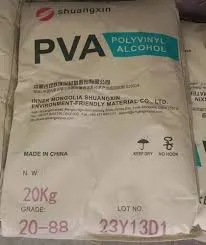HPMC Manufacturing A Comprehensive Overview
Hydroxypropyl Methylcellulose (HPMC) is a versatile, synthetic polymer derived from cellulose that is widely used in various industrial applications. Its unique properties, such as excellent adhesion, thickening, and film-forming capabilities, make it a critical component in industries such as construction, pharmaceuticals, food, and cosmetics. The manufacturing process of HPMC involves several key steps, each contributing to the quality and effectiveness of the final product.
The Raw Materials
The production of HPMC begins with the selection of high-quality cellulose. Cellulose is typically derived from natural sources, such as wood pulp or cotton fibers. The purity and properties of the starting material significantly influence the characteristics of the final HPMC product. After sourcing, the cellulose is subject to alkalization, where it is treated with sodium hydroxide to swell and modify its structure, making it more reactive for further processing.
Etherification Process
Once the cellulose is prepared, it undergoes an etherification process, which is crucial for the formation of HPMC. In this step, the alkalized cellulose reacts with propylene oxide and methyl chloride. The controlled conditions of temperature and pressure during this reaction are vital, as they determine the degree of substitution, which impacts the viscosity, solubility, and other functional properties of the HPMC. The resulting product is a white, free-flowing powder with varying degrees of hydroxypropyl and methyl substitution.
Purification and Drying
hpmc manufactur

After etherification, the crude HPMC is purified to remove any unreacted materials and by-products. This is often achieved through a series of washing and filtration processes. The purification step is essential to ensure that the final product meets the required standards for specific applications, particularly in the pharmaceutical and food industries where safety and consistency are paramount. Following purification, the HPMC is dried to obtain the desired moisture content, ensuring stability and extending the shelf life of the product.
Quality Control
Quality control is a critical aspect of HPMC manufacturing. Throughout the production process, samples are taken to assess various parameters, including viscosity, moisture content, and purity levels. These tests help manufacturers ensure that the HPMC meets regulatory standards and performs effectively in its intended applications. Advanced analytical techniques, such as chromatography and spectroscopy, are often employed to achieve precise measurements and maintain consistent quality.
Applications of HPMC
HPMC is used in a multitude of applications due to its functional properties. In the construction industry, it serves as a crucial additive in cement and tile adhesives, enhancing workability and improving adhesion for better performance. The pharmaceutical sector utilizes HPMC as a binder, thickening agent, and emulsifier in various formulations, from tablets to topical applications. In the food industry, it acts as a stabilizer, thickener, and texturizer, playing an essential role in products like sauces, ice creams, and dressings. Additionally, HPMC is extensively used in cosmetics, providing desired consistency and moisture retention in creams and lotions.
Conclusion
The manufacturing of Hydroxypropyl Methylcellulose (HPMC) involves a complex interplay of chemistry and engineering, resulting in a product that has a profound impact across multiple industries. As technology advances and new applications are discovered, HPMC continues to evolve, ensuring its place as a cornerstone in manufacturing processes worldwide. Whether improving the performance of construction materials or enhancing the texture of food products, HPMC stands out as a multifunctional agent that meets the diverse needs of modern industries.
-
The Application and Significance of Construction RdpNewsMay.19,2025
-
Industrial Grade HpmcNewsMay.19,2025
-
Building Coating Adhesive Building Coating Adhesive HpmcNewsMay.19,2025
-
Application Of Hpmc For Detergent For Detergent In DetergentsNewsMay.19,2025
-
Application Of Hpmc Cellulose In Cement-Based MaterialsNewsMay.19,2025
-
Application Of High Quality Hpmc For Construction In The Field Of ConstructionNewsMay.19,2025




